Waste Zero

Is it possible to achieve a zero-waste lifestyle ?
The text discusses the possibility of achieving a zero-waste lifestyle, which involves minimizing the amount of waste produced in daily life. It outlines three key steps: reduce, reuse, and recycle. Reducing waste can be done by buying only what is needed, choosing products with minimal packaging, and using reusable containers. Reusing items can involve donating or selling unwanted items, as well as repurposing them. Recycling involves separating recyclable materials from non-recyclable waste and sending them to facilities where they can be processed into new products. While achieving a completely zero-waste lifestyle may not be entirely feasible, making small changes in daily habits can significantly reduce waste production.

What are some innovative technologies being used for waste reduction ?
Innovative technologies are being developed to address the critical issue of waste reduction, including anaerobic digestion, recycling and upcycling, composting, incineration with energy recovery, zero waste practices, IoT and smart waste management, circular economy models, and biodegradable and compostable materials. These solutions aim to minimize environmental impact and promote resource conservation.

How does a circular economy contribute to waste reduction and resource conservation ?
The circular economy model promotes waste reduction and resource conservation by advocating for the reuse and recycling of materials, reducing raw material extraction, extending product lifecycles, treating waste as a resource, encouraging the sharing economy and digital services, improving resource efficiency, promoting biodegradable and renewable resources, raising consumer awareness, and supporting regulatory policies. This approach challenges traditional linear economic models and offers a sustainable solution to address environmental issues related to waste and resource depletion.

What are some simple changes I can make to live a zero-waste lifestyle ?
Living a zero-waste lifestyle is about reducing the amount of waste we produce and finding ways to reuse, recycle, or compost what we can't avoid. Here are some simple changes you can make to live a more sustainable and eco-friendly life: 1. Bring Your Own Bags: Always carry a reusable bag with you when you go shopping. This will help you avoid using plastic bags that end up in landfills or oceans. You can also use them for carrying other items like books, gym clothes, etc. 2. Use Reusable Water Bottles: Instead of buying bottled water, invest in a good quality reusable water bottle. This will not only save you money but also reduce the number of plastic bottles that end up in landfills. 3. Carry Reusable Cutlery: Carry a set of reusable cutlery (fork, spoon, knife) with you. This will help you avoid using disposable plastic utensils when eating out or getting takeout food. 4. Buy Bulk Foods: Buying bulk foods reduces packaging waste as you can bring your own containers to fill up on grains, nuts, spices, and other pantry staples. This also helps you save money in the long run. 5. Compost: Start composting at home by collecting organic waste like fruit and vegetable scraps, coffee grounds, and eggshells. This will reduce the amount of garbage you produce and create nutrient-rich soil for your garden or plants. 6. Choose Secondhand Goods: Consider buying secondhand goods instead of new ones. This includes clothing, furniture, electronics, and even cars. Buying used items reduces demand for new products and their associated environmental impacts. 7. Reduce Energy Consumption: Make small changes like turning off lights when not needed, unplugging chargers and appliances when not in use, and using energy-efficient light bulbs. These actions can significantly reduce your energy consumption and lower your carbon footprint. 8. Support Local Farmers: Buy locally grown produce from farmers' markets or join a community-supported agriculture program. Supporting local farmers reduces transportation emissions and ensures that your food is fresher and hasn't traveled far distances. 9. Avoid Single-Use Products: Try to avoid single-use products like paper towels, disposable razors, and plastic straws. Instead, opt for reusable alternatives like cloth towels, safety razors, and stainless steel or bamboo straws. 10. Educate Yourself: Continuously educate yourself about sustainable living practices and share your knowledge with others. The more people adopt these practices, the greater impact we can have on reducing waste and preserving our planet for future generations.

Can we achieve a zero-emission economy by 2050 ?
The question of whether we can achieve a zero-emission economy by 2050 is a complex one that involves multiple factors. Key points to consider include the current state of emissions, challenges to achieving zero emissions, and potential pathways to achieving this goal. Currently, global emissions are still rising, with the transportation sector being a major contributor. While there have been significant advancements in renewable energy technologies, their adoption rates vary widely across different regions. Challenges to achieving zero emissions include building the necessary infrastructure for a zero-emission economy, political will, and public acceptance. Governments must be willing to implement policies that support the transition to a zero-emission economy, and the public must be willing to adopt new technologies and change their behavior to reduce emissions. Potential pathways to achieving zero emissions include increased investment in renewable energy, electrification of transportation, carbon capture and storage (CCS) technology, changes in consumer behavior, and international cooperation. Achieving a zero-emission economy by 2050 is an ambitious goal, but it is not impossible. It requires concerted efforts from governments, businesses, and individuals worldwide. By investing in renewable energy, electrifying transportation, implementing CCS technology, changing consumer behavior, and cooperating internationally, we can make significant progress toward this goal. However, it is essential to recognize that achieving a zero-emission economy is not just about technology; it also requires political will and public acceptance.

How can governments promote waste reduction initiatives among citizens ?
Governments can promote waste reduction initiatives among citizens through education campaigns, incentives, regulations, community involvement, research and development, and public infrastructure investments. These strategies aim to raise awareness, encourage sustainable practices, enforce compliance, engage communities, fund innovative solutions, and establish efficient waste management systems.

What are the benefits of waste reduction for the environment ?
Reducing waste is crucial for preserving our planet's health and ensuring a sustainable future. Here are some key benefits of waste reduction for the environment: * Reduced Landfill Space * Conservation of Natural Resources * Decreased Pollution * Climate Change Mitigation * Preservation of Wildlife Habitats * Economic Benefits

Why is it important to recycle electronic waste ?
Recycling electronic waste is crucial for environmental sustainability, public health, and economic benefits. It conserves natural resources, reduces landfill space, prevents toxicity, creates jobs, saves costs, promotes green technology, reduces exposure to toxic substances, protects biodiversity, extends product lifespan, and raises awareness. Understanding the importance of e-waste recycling can lead to informed decisions that contribute to a circular economy and a healthier planet.

How does waste reduction contribute to a circular economy ?
The transition to a circular economy is significantly influenced by waste reduction, which encompasses various strategies like reusing products, recycling materials, and promoting resource efficiency. These practices help in conserving natural resources, reducing pollution, creating economic opportunities, and fostering sustainable consumer behavior. Governments and businesses play a crucial role in driving waste reduction through policy initiatives, technological innovations, and sustainable supply chain management. Community engagement and public awareness further support this shift towards a more sustainable economic model.

What are some innovative ways to recycle electronic waste ?
Innovative Ways to Recycle Electronic Waste Electronic waste, or e-waste, is a significant environmental concern that can be addressed through various innovative recycling methods. These include repurposing old devices, upcycling components, recycling plastics, energy recovery, designing for disassembly, regulation and education, and research and development. By adopting these strategies, we can reduce the amount of e-waste in landfills and lessen its environmental impact.

Can circular economy policies help reduce waste and pollution ?
Circular economy policies can significantly reduce waste and pollution by promoting reuse, recycling, and cleaner production methods. These policies incentivize businesses to design products that are easier to maintain and recycle, support sustainable business models like leasing and Product as a Service (PaaS), and encourage consumers to make environmentally friendly choices. Through such measures, the need for new raw materials decreases, energy consumption is reduced, and waste is diverted from landfills, all of which contribute to lower emissions and a cleaner environment.
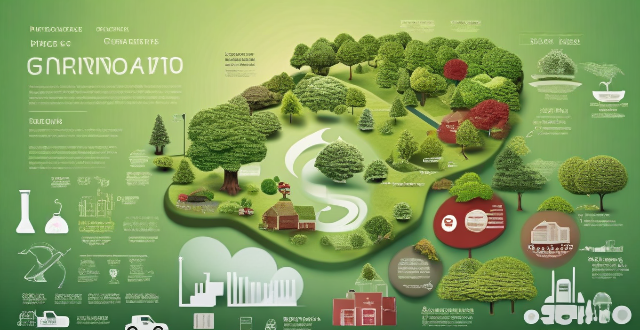
What is the impact of waste reduction on global climate change ?
This text discusses the importance of waste reduction in mitigating global climate change, highlighting how it can reduce greenhouse gas emissions, conserve natural resources, and protect ecosystems and biodiversity. It suggests ways to reduce waste such as reducing consumption, reusing items, recycling materials, composting organic waste, and supporting sustainable practices.

How can businesses contribute to reducing climate loss and damage ?
Businesses have a crucial role in mitigating climate loss and damage. Here's how they can contribute significantly: 1. **Adopting Sustainable Practices** - Reducing Energy Consumption - Waste Management - Water Conservation 2. **Investing in Clean Technology** - Research and Development - Green Infrastructure 3. **Promoting Sustainable Supply Chains** - Eco-friendly Sourcing - Partnership with Green Companies 4. **Supporting Environmental Initiatives** - Sponsoring Clean Projects - Education and Awareness 5. **Engaging in Carbon Offsetting** - Carbon Credits - Reforestation Projects 6. **Advocating for Policy Changes** - Lobbying for Green Policies - Collaborating with Governments 7. **Developing Circular Economy Models** - Zero Waste - Reusable Products

How does green technology help the environment ?
Green technology, or clean technology, includes various techniques and products designed to reduce environmental harm. Its benefits include reducing greenhouse gas emissions, conserving natural resources, protecting ecosystems, reducing waste, and promoting sustainable practices. These technologies help minimize pollution, save energy, preserve water, maintain biodiversity, and encourage recycling and responsible waste management. As green technology advances, its positive impact on the environment is expected to increase.

What is zero-based budgeting and how does it work ?
Zero-based budgeting (ZBB) is a method that requires justification for all expenses and revenues each period, starting from zero. It involves identifying revenue streams, determining expenses, prioritizing them, allocating funds, and monitoring/adjusting the budget. Advantages include increased efficiency, improved cost control, and enhanced planning. Disadvantages are its time-consuming nature, complexity, and potential for underfunding essential programs. Organizations should consider these factors before implementing ZBB.

What role does waste reduction play in sustainable development ?
The article discusses the importance of waste reduction in sustainable development. It highlights the environmental, economic, and social benefits of waste reduction, including conservation of natural resources, protection of ecosystems, climate change mitigation, cost savings, job creation, innovation and efficiency, public health, education and awareness, and community engagement. The article emphasizes that waste reduction is an essential component of sustainable development and encourages individuals, businesses, and governments to take action to reduce waste.
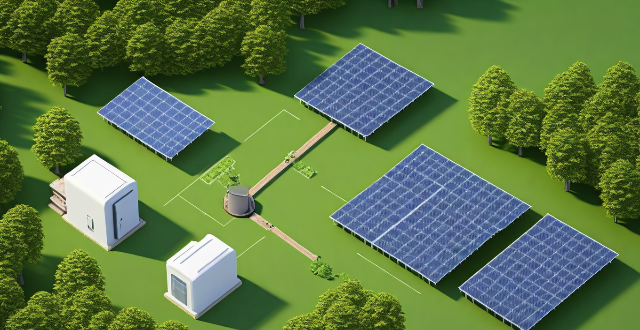
What innovative technologies are being developed for environmental protection ?
Innovative technologies for environmental protection include solar power, wind energy, electric vehicles (EVs), smart grid technology, recycling and waste management, and green building design. These technologies aim to reduce greenhouse gas emissions, air pollution, and waste generation while promoting the use of renewable energy sources. They offer advantages such as sustainability, reduced dependence on fossil fuels, improved efficiency, and lower maintenance costs.
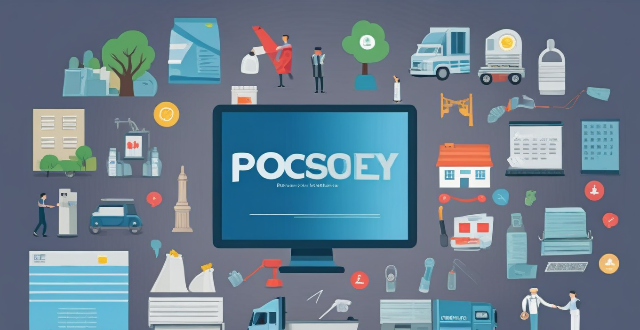
How do circular economy policies promote sustainability ?
Circular economy policies promote sustainability by reducing resource consumption, minimizing waste and pollution, fostering economic growth within ecological limits, creating social benefits and jobs, and encouraging systemic change and collaboration. Key practices include promoting product longevity, eco-design, zero-waste initiatives, clean technologies, circular business models, green jobs training, and multi-stakeholder cooperation. These policies aim to transition towards a more sustainable future by keeping resources in use for as long as possible while incurring the least waste.

How do cultural factors influence waste reduction practices ?
The text provides an overview of how cultural factors influence waste reduction practices, highlighting the role of cultural attitudes, social norms, education, religious beliefs, economic conditions, and technological advancements in shaping waste management behaviors. It emphasizes that respect for resources, consumerism vs. conservatism, composting traditions, public awareness campaigns, community cleanliness standards, taboos around waste, environmental education, family values, role models, stewardship principles, reincarnation beliefs, interconnectedness philosophies, affordability of disposable products, recycling costs, government incentives, access to technology, digital awareness campaigns, and innovative product design are all aspects of culture that can significantly impact waste reduction efforts. By understanding these cultural dynamics, more effective strategies for sustainable living can be developed globally.
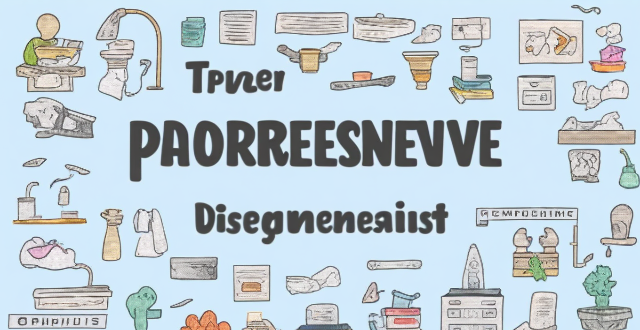
How do I properly dispose of electronic waste ?
The text provides a comprehensive guide to the proper disposal of electronic waste (e-waste), which is crucial for environmental preservation and public health. The guide explains what e-waste is, why it's a problem, and outlines steps for responsible e-waste management, including reducing consumption, reusing devices, recycling them through various methods, disposing of hazardous materials responsibly, and raising awareness about the issue. By following these steps—reduce, reuse, recycle, responsibly dispose, and raise awareness—individuals and communities can significantly mitigate the negative impacts of e-waste and make a difference.

Can sportswear companies produce more sustainable products ?
Sportswear companies can produce more sustainable products by using eco-friendly materials, reducing waste, and adopting circular economy principles.

How do clean production technologies help reduce waste and pollution ?
Clean production technologies are vital in reducing waste and pollution. They achieve this through energy efficiency, resource efficiency, improved waste management, pollution control, and a holistic approach to sustainability via life cycle assessment. By implementing these technologies, industries can operate in a more sustainable manner, minimizing their environmental impact.

How can businesses implement waste reduction practices in their operations ?
This topic discusses the importance of waste reduction in businesses and provides strategies for implementing sustainable practices. It emphasizes the benefits of conducting a waste audit, adopting eco-friendly packaging, optimizing manufacturing processes, promoting reuse and repair, training employees in waste reduction, and partnering with green suppliers. The goal is to contribute to a more sustainable future while also benefiting financially through cost savings and efficiency gains.

What is the relationship between waste reduction and energy conservation ?
The article discusses the relationship between waste reduction and energy conservation, highlighting their importance in promoting sustainable development. Waste reduction strategies such as recycling, composting, reusing materials, and reducing packaging conserve natural resources, reduce landfill space, and lower greenhouse gas emissions. Energy conservation measures like using energy-efficient appliances, improving insulation, and promoting renewable energy sources lead to lower energy costs, reduced greenhouse gas emissions, and promote sustainable development. The practices are interconnected, with recycling saving energy, composting reducing energy use, reducing packaging saving energy, energy-efficient appliances reducing waste, and promotion of renewable energy sources conserving energy and reducing waste.
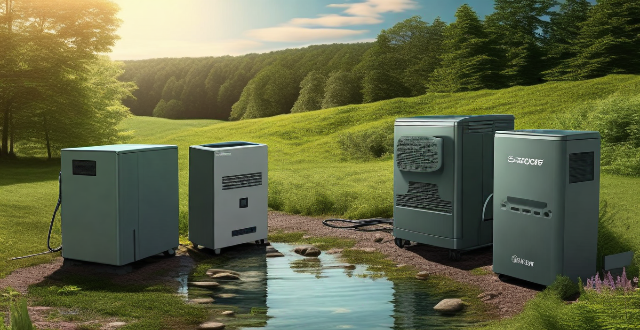
How does electronic waste affect the environment if not recycled ?
Electronic waste, or e-waste, refers to discarded electronic devices such as computers, smartphones, and televisions. Improper disposal of these items can have severe consequences for the environment, including the release of toxic chemicals into soil, water, and air. These chemicals can cause health problems for both humans and wildlife. Non-recycled e-waste also occupies valuable landfill space and contributes to soil contamination, water pollution, and air pollution. Proper recycling of electronic waste is essential to protect the environment and human health, conserve natural resources, and minimize the impact on landfills.

How can I find a reliable electronic waste recycling center near me ?
Finding a reliable electronic waste recycling center is crucial for environmental protection, resource conservation, and energy savings. Here's a summary of the steps to find one: 1. Research online using search engines and review websites. 2. Check with local government agencies and solid waste management departments. 3. Ask friends, family, and community groups for recommendations. 4. Look for certifications and accreditations like e-Stewards and R2/RIOS. 5. Visit the recycling center to assess cleanliness and organization. To properly dispose of electronic waste, backup data, remove personal information, and follow manufacturer instructions.
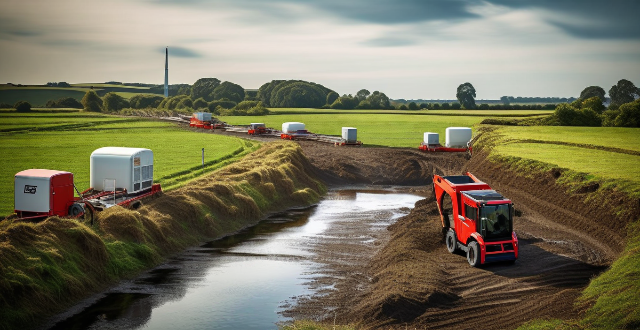
Are there any laws or regulations aimed at promoting waste reduction ?
Laws and regulations aimed at promoting waste reduction include extended producer responsibility (EPR), landfill taxes and bans, recycling targets, packaging regulations, local ordinances and programs such as curbside recycling and composting, waste reduction education campaigns, pay-as-you-throw programs, and international agreements like the Basel Convention. These measures encourage sustainable practices, reduce waste production, and promote recycling.

What are the most effective strategies for waste reduction in households ?
Effective Strategies for Waste Reduction in Households 1. Reduce: Buy only what you need, choose products with less packaging, and use reusable items. 2. Reuse: Donate or sell unwanted items and repurpose old items for new uses. 3. Recycle: Separate recyclable materials, know what can be recycled locally, and compost organic waste. 4. Avoid Single-Use Plastics: Bring your own reusable bags and use refillable containers. 5. Educate Yourself and Others: Learn about waste reduction and share tips with friends and family.
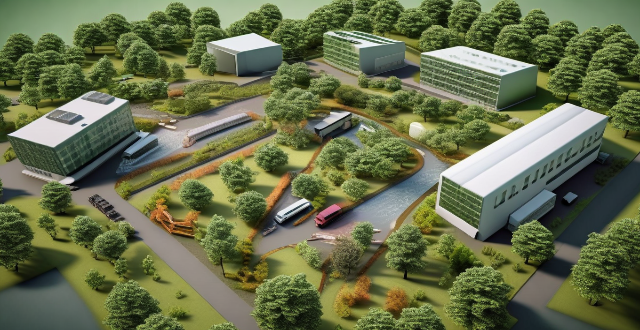
What innovations are needed to reach ambitious climate objectives ?
To reach ambitious climate objectives, innovations areTo reach ambitious climate objectives, innovations are renewable energy sources, carbon capture sustainable agriculture and forestry, circular economy and waste management, policy and finance, and education and awareness. Key areas include improved insulation technology, smart building management systems, electric vehicles, public transit efficiency, photovoltaic efficiency, offshore wind farms, enhanced geothermal systems, direct air capture, bioenergy with carbon capture and storage, precision farming, agroforestry, reforestation and afforestation, resource recovery, biodegradable materials, zero waste strategies, carbon pricing, green bonds, public-private partnerships, educational programs, and behavior change campaigns. Collaboration among governments, businesses, researchers, and citizens worldwide is crucial to drive these changes forward.

Can waste reduction lead to cost savings for individuals and companies ?
Waste reduction can lead to cost savings for both individuals and companies by minimizing waste in various aspects of daily life and business operations. For individuals, reducing food waste through meal planning and proper storage, minimizing energy consumption with energy-efficient appliances and water conservation, and reducing unnecessary spending through secondhand shopping and repairing instead of replacing can result in significant cost savings. Companies can also benefit from waste reduction by optimizing production processes with lean manufacturing techniques and resource recovery, improving logistics and supply chain management through just-in-time inventory and efficient packaging, and enhancing energy efficiency with green building design and employee training. Overall, waste reduction is a crucial aspect of sustainable living and business practices that can lead to cost savings while contributing to environmental sustainability.